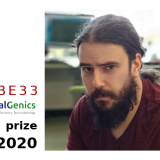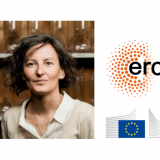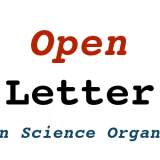STRUCTURING DISORDER: The case of the Unique domain of the oncoprotein c-Src

Proteins have different “flavours” of structural order/disorder, and the interplay between structured and disordered regions is key for their function. The continuum of protein structural sates spans from fully and intrinsically disordered entities to well folded and structured ones. It is becoming increasingly evident that most eukaryotic proteins have both types of regions.
Mariano Maffei, Miquel Pons and colleagues, at the University of Barcelona, have shed light on the synergy between the structured SH3 domain and the contiguous intrinsically disordered N-terminus of c-Src protein. The latter was the first proto-oncogene to be discovered and it plays a crucial role in cell signalling transduction pathways, all of which contribute to its oncogenic potential. c-Src contains a 85-residues intrinsically disordered region located at the N-terminus (SH4 and Unique domain) whose biological function has been recently clarified. However, the connection with the classical c-Src regulatory mechanisms involving the SH3 and SH2 domains is still missing.
The binding of a poly-proline peptide allosterically modulates most of the observed interactions, both in absence and presence of lipid bicelles
Through the application of state-of-the-art NMR techniques, the authors showed that the SH3 domain acts as a scaffold for the intrinsically disordered Unique domain. The work, which has been highlighted with the cover of the Structure journal, describes the interaction between the SH3 and the SH4 domains, that forms a long-loop including the entire Unique domain. The conformational freedom of this disordered region is further restricted through direct contacts between the RT-loop of the SH3 domain and, primarily, residues located within the recently discovered Unique lipid binding region (ULBR).
In this elegant work, Maffei et al. have also discovered that the binding of a poly-proline peptide allosterically modulates most of the observed interactions, both in absence and presence of lipid bicelles. These results demonstrate a direct connection between classical c-Src regulation involving the SH3 domain and the new regulation mechanisms involving the intrinsically disordered regions and provide new evidence of the functional importance and the underlying mechanism behind regulation of signalling pathways by intrinsically disordered domains.






